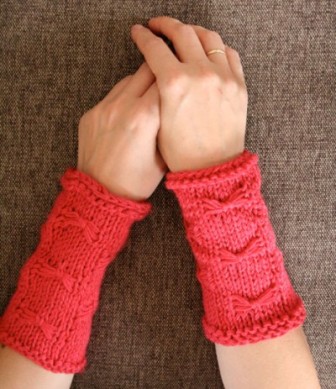
Now that I've finished my beret
and my sweater, these are what I'm knitting next! If you want to knit them, too, you'll need size 10 double-pointed needles, and a fine weight yarn with which you can knit double-stranded [pattern
here]. By the way, the site where these originate from is in two languages: the first is obviously English, but I can't figure out the other one. Is it Norwegian, Swedish, Dutch? If you recognize it, please let me know! [via
Whip Up]
Posted by Catherine Skrzypek. Posted In : Patterns